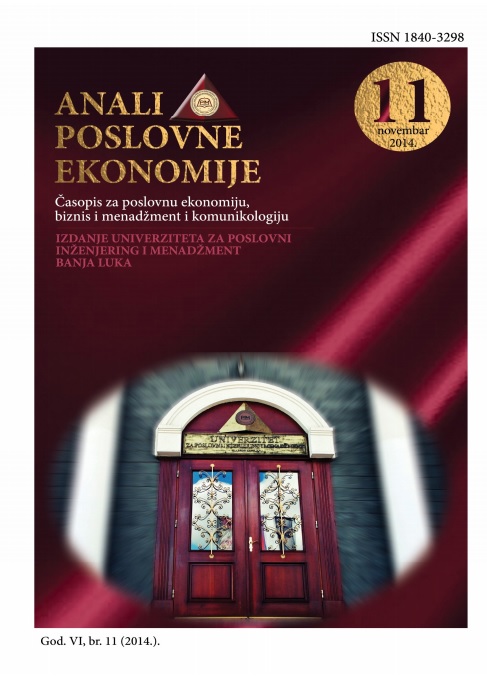MODELING AND FORECASTING EXCHANGE RATE VOLATILITY IN EEC COUNTRIES
DOI:
https://doi.org/10.7251/APE1114001MAbstract
This main objective of this paper is to examine the properties of the GARCH
model and its usefulness in modeling and forecasting the volatility of exchange rate
movements in selected EEC countries (Romania, Hungary and Serbia). The daily
returns of exchange rates on Hungarian forint (HUF), Romanian lei (ROL) and
Serbian dinar (RSD), all against the US dollar are analyzed during the period 03.
January 2000 to 15. April 2013 in respect. In order to measure the involved risk,
symmetric and asymmetric GARCH models are applied. The accuracy of exchange
rate volatility forecast is evaluated through reference to the most commonly used
criteria. These include a Mincer-Zarnowitz regression based test, Mean Absolute
Error (MAE), Root Mean Square Error (RMSE) and Diebold and Mariano test (DM
test). The results of Mincer-Zarnowitz regression test for selected exchange rate
return series showed a clear lack of explanotory power and sub-optimality of the
TGARCH model. The results of the Mean Absolute Error (MAE) and the Root Mean
Square Error (RMSE) for the forecasted volatility showed that symmetric model
better predict conditional variance of the exchange rate returns, but estimating results
indicating that the parameters of forecasts are not satisfactory, i.e. models have little
predictive power. Results for Diebold-Mariano test results for Diebold-Mariano test
showed that symmetric model outperforming TGRACH forecast in case of Hungarian
forint and Serbian dinar sample series, and that only in case of Romania lei TGARCH
outperforming the GARCH forecast.

